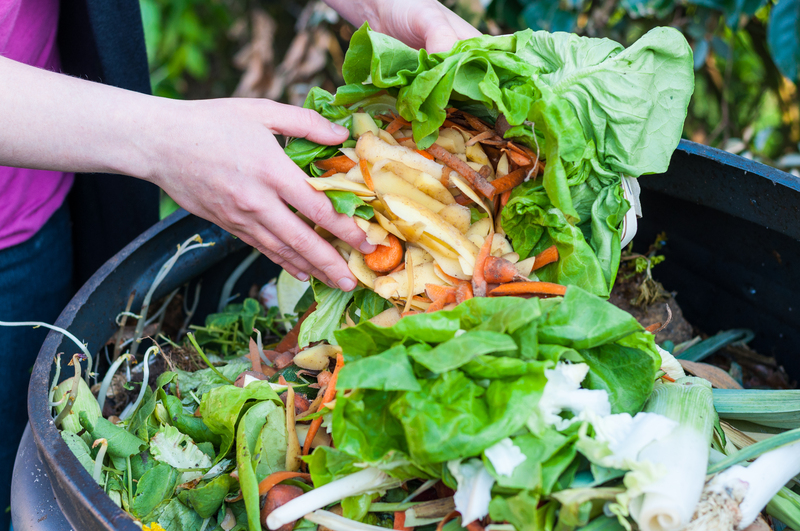Minimize the Cost of Removing Bulky Waste Items: A Comprehensive Guide
Dealing with bulky waste removal can be a stressful and costly process, whether you're clearing out an old sofa, worn-out appliances, large furniture, or garden debris. Without a proper plan, expenses can quickly add up, but, thankfully, there are strategic and sustainable ways to minimize bulky junk disposal costs. This guide will walk you through smart, actionable steps to minimize the cost of removing bulky waste items while keeping convenience and eco-friendliness in mind.
Understanding Bulky Waste: What Qualifies?
Before learning how to reduce bulky waste removal expenses, it's essential to know what qualifies as bulky waste. Generally, these are items too large or heavy for regular curbside bins. Common bulky waste items include:
- Old couches, mattresses, and beds
- Wardrobes and dressers
- Fridges, freezers, washing machines, dishwashers
- Large garden equipment or yard debris
- Carpets, rugs, and rolled flooring
- Broken bicycles, exercise equipment
- Miscellaneous large toys or playsets
Understanding what is considered bulky waste helps you avoid mixing the wrong materials and keeps disposal straightforward. Remember: hazardous waste, paint, and chemicals typically have different disposal regulations.
Plan Ahead: Early Preparation Saves Money
One of the most powerful ways to reduce bulky junk disposal costs is simple -- prepare beforehand. Here's how early preparation can help:
- Inventory Your Items: Create a list of all large items you plan to remove so you can organize disposal or collection for everything in one go. This prevents costly multiple trips or pickups.
- Measure Your Waste: Estimate the volume and type of items you need to get rid of. This determines whether you need a specialist collection, a skip, or can utilize free/budget-friendly services.
- Disassemble Bulky Items: Where possible, break down furniture and large objects into smaller pieces. This can reduce volume and fit more waste into a single load, which often means smaller fees.
- Time Your Cleanup: Some councils or private companies offer discounts for bulk collection days or during specific seasons. Research these dates and time your clean-up accordingly.
Utilize Free and Low-Cost Collection Services
Many cities and municipalities offer bulk waste pick-up or *large item removal* days, which may require a small fee or be entirely free. Explore these local resources:
- Local Council Services: Inquire about your area's bulk collection policies. Many allow annual or seasonal pickups of large items as part of your municipal waste services.
- Charity and Nonprofit Collections: Organizations like Goodwill, Salvation Army, or Habitat for Humanity may collect reusable bulky items at no charge. This is not only free but also eco-friendly.
- Neighborhood Bulky Waste Events: Some cities hold community disposal events, especially after holidays or during move-out periods, offering discounted or complimentary collection.
- Curb Alerts and Freecycle Groups: Online groups like Freecycle, Nextdoor, or Facebook Marketplace sometimes allow you to post "curb alerts" -- leave usable bulky items outside for others to collect for free.
Maximize Value: Sell, Donate, or Recycle Before You Dispose
One of the best ways to lower the cost of bulky waste collection is not to pay for disposal at all! Before calling a removal service, consider:
- Sell Usable Items: Platforms like eBay, Facebook Marketplace, and Craigslist are ideal for selling second-hand furniture and appliances. Even older items may fetch some cash, turning your bulk waste problem into a profit.
- Donate to Charity: Make sure your items are still functional and safe. Donating to non-profit organizations helps you avoid disposal costs and supports your community.
- Recycle What You Can: Look for dedicated recycling programs for electronics, metal, and wood. Proper recycling can be cheaper than landfill tipping fees and benefits the environment.
Tip: Make your donation or sales posts appealing by including dimensions and clear photos; this increases your chances of a fast pickup.
Compare Bulky Waste Removal Providers
If your items are not suitable for reuse or donation, professional collection might be necessary. To minimize the bulky item removal cost, shop around:
- Request quotes from at least three local junk removal companies;
- Compare their pricing methods (by weight, volume, or by item);
- Ask if costs cover loading, transport, and disposal fees;
- Check for customer reviews -- reliability matters!
A little research ensures you avoid hidden charges and helps you select the best value option. Don't be afraid to negotiate a better deal if you're disposing of multiple items at once.
Save More with DIY Bulky Waste Disposal
Self-hauling and drop-off at waste transfer stations or recycling centers can cut the cost of heavy waste removal significantly. Here's how to do it right:
- Check Local Drop-off Sites: Most communities have at least one landfill, waste transfer, or recycling station accepting bulky items (fees vary based on weight/volume).
- Rent or Borrow a Vehicle: If you don't have access to a suitable vehicle, ask a friend or rent a van for the day; this can cost less than a collection service.
- Sort and Load Efficiently: Group similar materials together (wood, metal, electronics) to qualify for recycling rates and make unloading quicker and cheaper.
- Be Safe! Use proper lifting gear and seek help for very heavy items to avoid injury.
*Savings tip*: Combine your trip with neighbours or friends who also need to dispose of bulky waste, and share the transport and tipping costs.
Bulk Waste Minimization Through Reduction & Prevention
The most cost-effective bulky item removal strategy is to prevent accumulation in the first place. Consider these habits:
- Buy Quality & Repair: Choose furniture and appliances designed to last, and repair instead of replacing whenever possible.
- Opt for Multi-Use or Modular Design: Flexible furniture reduces the need for single-purpose bulky items.
- Rent or Borrow: For items needed temporarily (like guest beds, large tools, or event equipment), consider renting instead of buying.
- Regular Decluttering: Small, frequent purges make the disposal process cheaper and less overwhelming than periodic large clear-outs.
What Are the Typical Costs for Bulky Item Removal?
The price to remove heavy waste items varies based on your region, the type and number of items, accessibility, and your chosen disposal method. Here's a quick overview of possible charges:
- Municipal collection: Often $20 - $80 per item or load, sometimes included in annual waste fees
- Private junk removal: Ranges from $60 - $300+, depending on volume and labor
- Landfill/transfer station: Usually $25 - $60 per load, by weight or volume
- Skip/bin hire: $200+ for a small skip, ideal for ongoing projects or multiple items (but prices rise quickly for larger bins)
*Note*: Additional costs may apply for certain items (refrigerators, mattresses, electronics) due to legal disposal requirements.
Common Mistakes That Increase Bulky Waste Removal Costs
To avoid overpaying for bulk waste disposal, keep these pitfalls in mind:
- Last-minute bookings: Emergency pickups or rushed jobs often incur premium rates.
- Poor sorting: Mixing general waste with recyclables or hazardous items can lead to fines or higher disposal charges.
- Ignoring local options: Missing out on free municipal collections or skip-sharing schemes can mean paying for unnecessary services.
- Overlooking alternative solutions: Failing to sell, donate or recycle usable items drives up waste volume and disposal cost.
Eco-Friendly Bulky Item Disposal on a Budget
Disposing of large items sustainably does not need to cost a fortune. Here are some tips for affordable and green bulky waste removal:
- Recycling Facilities: Many items -- especially metal, wood, and electronics -- can be recycled at no or low cost. Check with your local center for accepted items and drop-off times.
- Upcycling: If you're handy, transform old furniture into new creations. DIY upcycling can save disposal costs and even generate income if sold at market.
- Community Networks: Neighborhood "buy nothing" or swap groups help match reusable items with people who need them.
- Creative Partnerships: Artists and schools often seek unusual materials for projects and might collect your discards for free.


Checklist to Cut the Cost of Bulky Waste Disposal
- Assess and inventory all bulky items
- Disassemble where possible to reduce space
- Check all free or municipal collection options
- List usable items for sale or donation
- Recycle what you can at specialized facilities
- If using removal services, get multiple quotes
- Consider self-haul or sharing transport with neighbors
- Avoid last-minute booking fees
Frequently Asked Questions About Minimizing Bulky Waste Costs
-
Can I leave bulky waste on the curb?
Only where local councils permit. Unattended waste outside scheduled pickup days can result in fines. -
What's the cheapest way to get rid of a sofa?
Try free collection by charity, post online for private sale or giveaway, or use a municipal bulk collection day. -
Do I need a permit for a skip/bin?
Only if placing on public land, like a street. Always check local regulations for permits and time limits. -
Is it safe to donate mattresses?
It depends! Clean, undamaged mattresses are accepted by some charities, but regulations vary by region.
Conclusion: Save Money and the Environment with Smart Bulk Waste Removal
Whether you're moving, renovating, or spring cleaning, it's possible to minimize the cost of removing bulky waste items with the right preparation and a bit of creativity. From free donation networks and recycling centers to clever self-hauling and timing collections, opportunities abound to keep expenses down while keeping waste out of landfill.
Remember: The keys to affordable bulky waste removal are careful planning, efficient sorting, making the most of free collection resources, and thinking sustainably at every step.
Ready for your next clear out? Take advantage of local resources, involve your community, and turn bulky waste removal from a costly chore into a simple, wallet-friendly task!